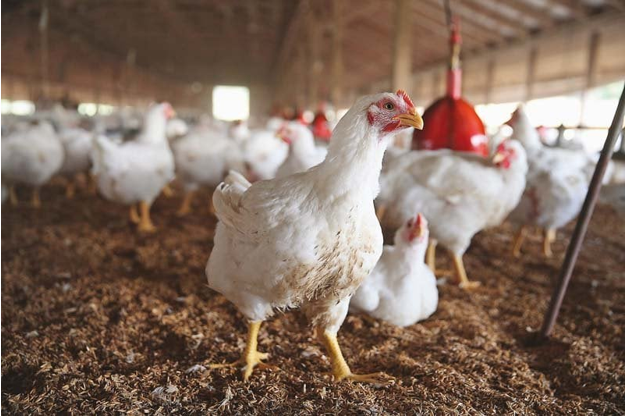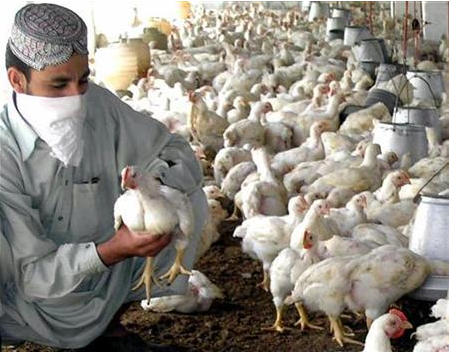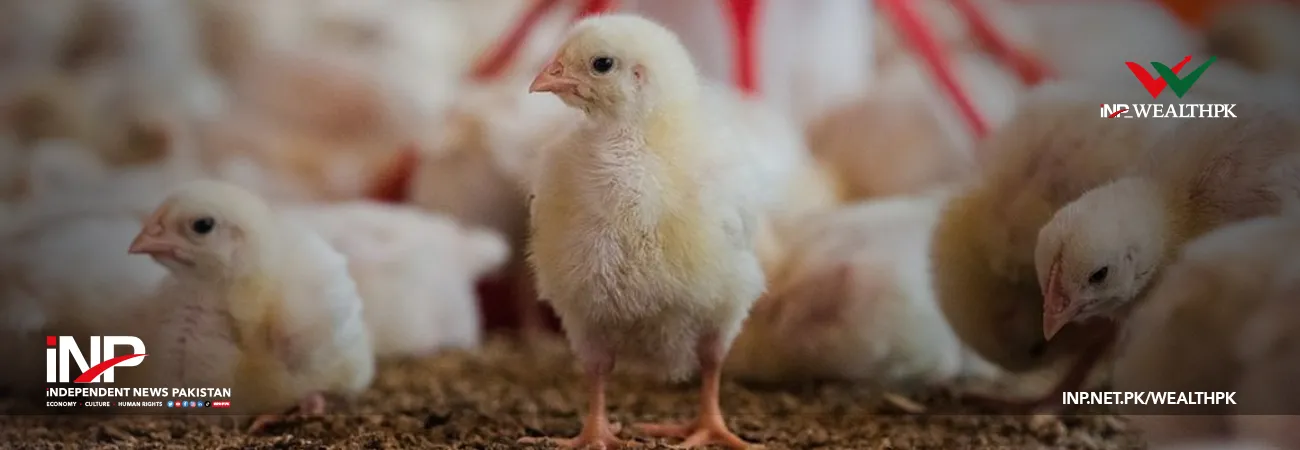INP-WealthPk
Ahmed Khan Malik
Poultry farming in Sindh is set for growth as the provincial government, in collaboration with stakeholders, has introduced a new strategy aimed at transforming the sector.

“The new poultry farming strategy is in response to the increasing demand for poultry products and the need to modernise and expand the sector to meet this demand,” Ubaid Narejo, Director of Poultry Production and Research, Sindh, told WealthPK.
“The provincial government aims to boost both the production and efficiency of the industry by adopting modern farming techniques and improving the overall infrastructure,” he added. “Sindh contributes immensely to the country’s poultry industry, and under the new plan, the sector is expected to receive substantial support, propelling it to new heights,” he said.

Sharing the objectives of the strategy, Narejo pointed out that one of the primary goals of the new plan was to increase the production capacity of poultry farms while ensuring sustainable practices. “The province has witnessed a growing middle-class population with higher purchasing power, which has led to a surge in demand for poultry products such as eggs and chicken meat.
The strategic focus is to ensure that this demand is met without compromising on quality or sustainability.” “The new poultry farming strategy emphasises the use of modern technology to improve farm productivity. This includes the adoption of automated systems for feeding, temperature control, and monitoring of poultry health. Technology can significantly reduce labour costs and increase efficiency in poultry production,” Narejo said.
“Also, a key aspect of the strategy is the launch of a training programme for poultry farmers. The initiative will equip them with the latest knowledge and skills on best farming practices, disease management, biosecurity measures, and market trends. Empowering farmers with knowledge is expected to raise the productivity and profitability across the sector,” Narejo explained.
To support growth, he noted that the strategy also included the development of essential infrastructure such as cold storage facilities, transport systems, and processing plants. “This would help maintain the quality of poultry products, especially in remote areas, and ensure they reach the market without spoilage,” the director of Poultry Production and Research, Sindh, said. He said that one of the key hurdles for poultry farmers had been access to affordable credit.
“The poultry farming strategy aims to address this issue by facilitating easier access to loans for poultry farmers. With financial backing, farmers will be able to invest in upgrading their farms, purchasing better equipment, and expanding their business.” “The rise of diseases has posed a challenge to the poultry industry in the past.
The poultry farming strategy includes robust disease management and biosecurity measures to protect farms from outbreaks. Preventive health measures, including vaccination programmes and disease surveillance, will be integral to the success of the strategy,” he explained. Narejo noted that the new strategy was expected to have a multifaceted positive impact on the local economy.
“As poultry farming grows, it will create thousands of direct and indirect employment opportunities in rural areas of Sindh. This will help improve the livelihoods of local farmers and workers. Moreover, the increased production of poultry products will contribute to the national food supply, reduce import dependency, and enhance food security,” the director of Poultry Production and Research, Sindh, said.
Credit: INP-WealthPk




